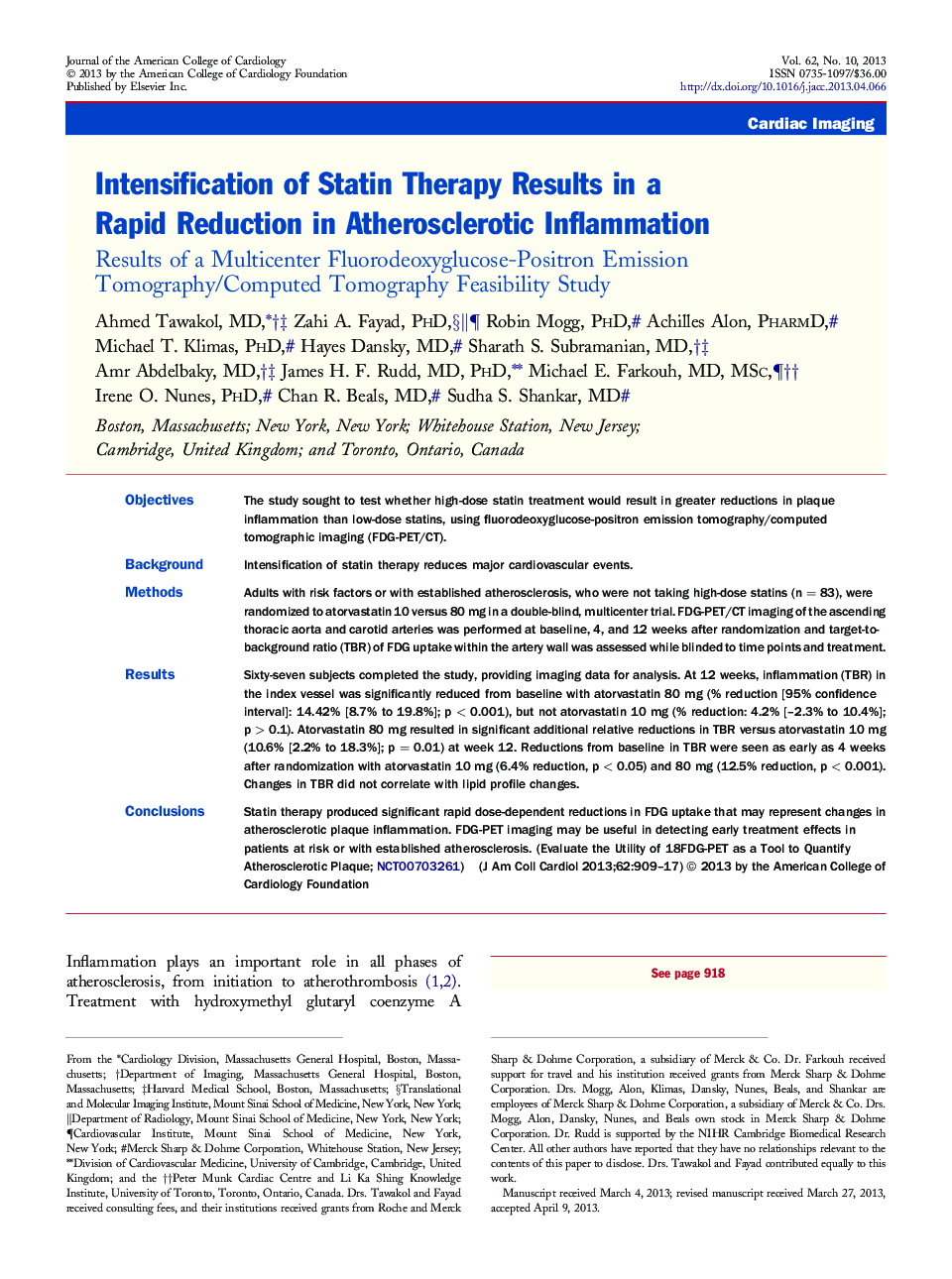| کد مقاله | کد نشریه | سال انتشار | مقاله انگلیسی | نسخه تمام متن |
|---|---|---|---|---|
| 2945641 | 1577143 | 2013 | 9 صفحه PDF | دانلود رایگان |

ObjectivesThe study sought to test whether high-dose statin treatment would result in greater reductions in plaque inflammation than low-dose statins, using fluorodeoxyglucose-positron emission tomography/computed tomographic imaging (FDG-PET/CT).BackgroundIntensification of statin therapy reduces major cardiovascular events.MethodsAdults with risk factors or with established atherosclerosis, who were not taking high-dose statins (n = 83), were randomized to atorvastatin 10 versus 80 mg in a double-blind, multicenter trial. FDG-PET/CT imaging of the ascending thoracic aorta and carotid arteries was performed at baseline, 4, and 12 weeks after randomization and target-to-background ratio (TBR) of FDG uptake within the artery wall was assessed while blinded to time points and treatment.ResultsSixty-seven subjects completed the study, providing imaging data for analysis. At 12 weeks, inflammation (TBR) in the index vessel was significantly reduced from baseline with atorvastatin 80 mg (% reduction [95% confidence interval]: 14.42% [8.7% to 19.8%]; p < 0.001), but not atorvastatin 10 mg (% reduction: 4.2% [–2.3% to 10.4%]; p > 0.1). Atorvastatin 80 mg resulted in significant additional relative reductions in TBR versus atorvastatin 10 mg (10.6% [2.2% to 18.3%]; p = 0.01) at week 12. Reductions from baseline in TBR were seen as early as 4 weeks after randomization with atorvastatin 10 mg (6.4% reduction, p < 0.05) and 80 mg (12.5% reduction, p < 0.001). Changes in TBR did not correlate with lipid profile changes.ConclusionsStatin therapy produced significant rapid dose-dependent reductions in FDG uptake that may represent changes in atherosclerotic plaque inflammation. FDG-PET imaging may be useful in detecting early treatment effects in patients at risk or with established atherosclerosis. (Evaluate the Utility of 18FDG-PET as a Tool to Quantify Atherosclerotic Plaque; NCT00703261)
Journal: Journal of the American College of Cardiology - Volume 62, Issue 10, 3 September 2013, Pages 909–917